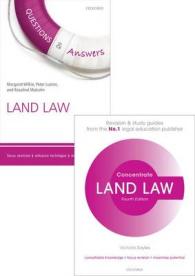Full Description
The book combines for the first time attachment theory, regulation attachment therapy, and the intergenerational transmission of trauma, showing how the clinical therapeutic process of "going beyond trauma" may result in forgiveness of past relationships and other reparatory practices in which self and other, both internal and external, are integrated and reconnected, opening the subject to creativity and new meaning in life.From early relational trauma to abuse and neglect, to massive social trauma such as war and genocide, the most recent psychoanalytic theories on trauma highlight the relevance of attachment on one side and intergenerational transmission of trauma on the other. The appropriate psychoanalytic treatment of traumatisation of human origin therefore needs to address the specific relational issues, trying to repair precisely the connection between self and other, thanks to the clinician's active participation in the exchange. Abreaction, we could say with Ferenczi, whose concept of trauma differs both in theory and in practice from Freud's idea, "is not enough": in order to restore the empathic dyad between self and other, reparatory connections need to be re-established in the therapetic space, filled with both verbal and nonverbal interactions, fostered by the activity of the right brain of both therapist and patient, as the most recent neurobiology findings show. In the new psychoanalytic turn, the classic talking cure becomes a practice of testimony in which the reality of trauma is carefully recuperated, together with a new awareness of the distortions in the relationship, in this way interrupting the chain of repetition of the traumatic identifications, fixing the subjects in a predictable script of victim and persecutor.Through the appropriate steps, an integration of the split parts of the traumatised self allows the subject to reach a beyond-ness of trauma, where creativity, social reconnection and possibly forgiveness between self and other and reconciliation between groups can be envisioned and experienced.
Contents
ACKNOWLEDGEMENTSABOUT THE AUTHORPREFACE by Otto F. KernbergCHAPTER ONE From early relational trauma, to abuse, to massive social traumaCHAPTER TWO Psychoanalysis of trauma: contemporary psychoanalysis and/as testimonyCHAPTER THREE Generations of trauma: reflections on the transmission of trauma from the first to the second and third generationCHAPTER FOUR Going beyond trauma: mourning, connectedness, creativity, and the practice of forgivenessREFERENCESINDEX







